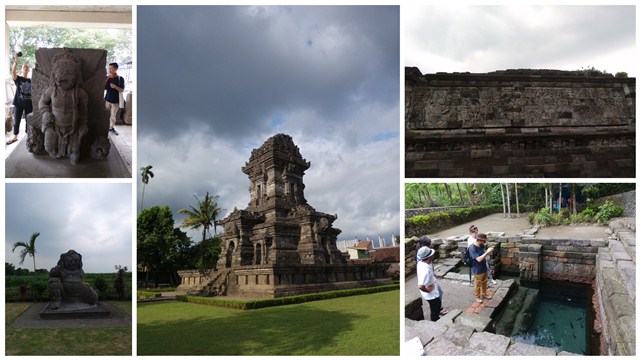Nalanda Students at the NSC-SOAS Summer Programme in Indonesia
August 5, 2016
Azad Hind Gulshan Nanda, Pritha Mukherjee and Shaashi Ahlawat- students from the School of Historical Studies attended the NSC-SOAS Summer Programme in Southeast Asian Art History and Conservation, held in Trawas, East Java, Indonesia from July 23 to August 2, 2016.Here’s an account of their experience by Pritha Mukherjee
The NSC-SOAS Southeast Asian Art History and Archaeology Summer Programme 2016 was spectacularly intensive and interesting at the same time. The lectures, or rather presentations, by renowned scholars such as Marijke Klokke, Swati Chemburkar, Peter Sharrock, Hadi Sidomulyo, Helene Njoto, our very own Andrea Acri and others made for an arresting array of information, materials and raised more avenues for questioning than I have ever encountered. The Programme focused on the Southeast Asian cultural connections and a major thrust area was to look at the directionality of the exchanges and influences that one can see in this part of the world. The discussion revolved around the Ramayana(s) of South Asia, the Ramayana kakawin of Indonesia, the very Tantric Hanumans, and Bhimas and Garudas – motifs that were familiar yet completely reconfigured for their immediate context.

Clockwise from right: Candi Bajamg Ratu; Candi Surowono; Pritha, Shaashi and Azad at Candi Tikus; Candi Jolotundo – on Mt Penanggungan; Candi Tikus
A three day trip to Blitar, in East Java, comprising visits to sites such as Candi Tikus, Candi Bajamg Ratu, Candi Surowono, Candi Sawentar, Candi Kotes, the Panataran Temple Complex, Museum Airlangga, the Trowulan Museum and so on saw us grappling with the newness and yet an uncanny familiarity of the temple art. The architectural splendour of the mostly East Javanese temples and the vibrant reliefs that adorned their many tiers incited us to investigate and question any and every feature of the reliefs – be it the Arjunawiwaha, Garudeya, or Panchatantra stories being told, or the ornate foliage-like ornamentation.

Clockwise from right: Candi Surowono – The Arjunawiwaha Panel; Ritual bathing pond at the Panataran Temple Complex; Singhosari Temple; The Lone Dwarapala – found among sugarcane fields; Sculpture housed at Trowulan Museum
A hike to Mt Penanggungan was also scheduled, that took place on the last day of the Programme and that saw the enthusiastic participation of Azad and Shaashi. It was a gruelling yet satisfying sort of a “walk,” that took them close to the summit in a span of around 9 hours. The mountain is replete with verdant greenery and the remains of an almost-mythical number of religious sites. It is identified with the uprooting of the Mount Meru from India, and is thought to be the very peak of that mountain that got detached while being carried overseas (and over land – what a great story!).
Pritha chose to visit the erstwhile capital of the Singhasari dynasty, whose doings are still shrouded in mystery and myths – their temples still a puzzle to the modern-day historians, art historians and archaeologists. They visited places like Candi Badut – an exception of a Central Javanese temple seen in East Java (and let me tell you, the architecture is quite visibly different between the apparently small regions of Central and East Java), the Singhasari temple complex with the intricately carved third storey and the unfinished second and first storey (if they may be called so). Marijke Klokke, the supervisor for this group with an intimidating memory regarding the art, ornamentation and iconography of Southeast Asia, and even South Asia.

The view from the UTC Camous in Trawas – where the students were housed